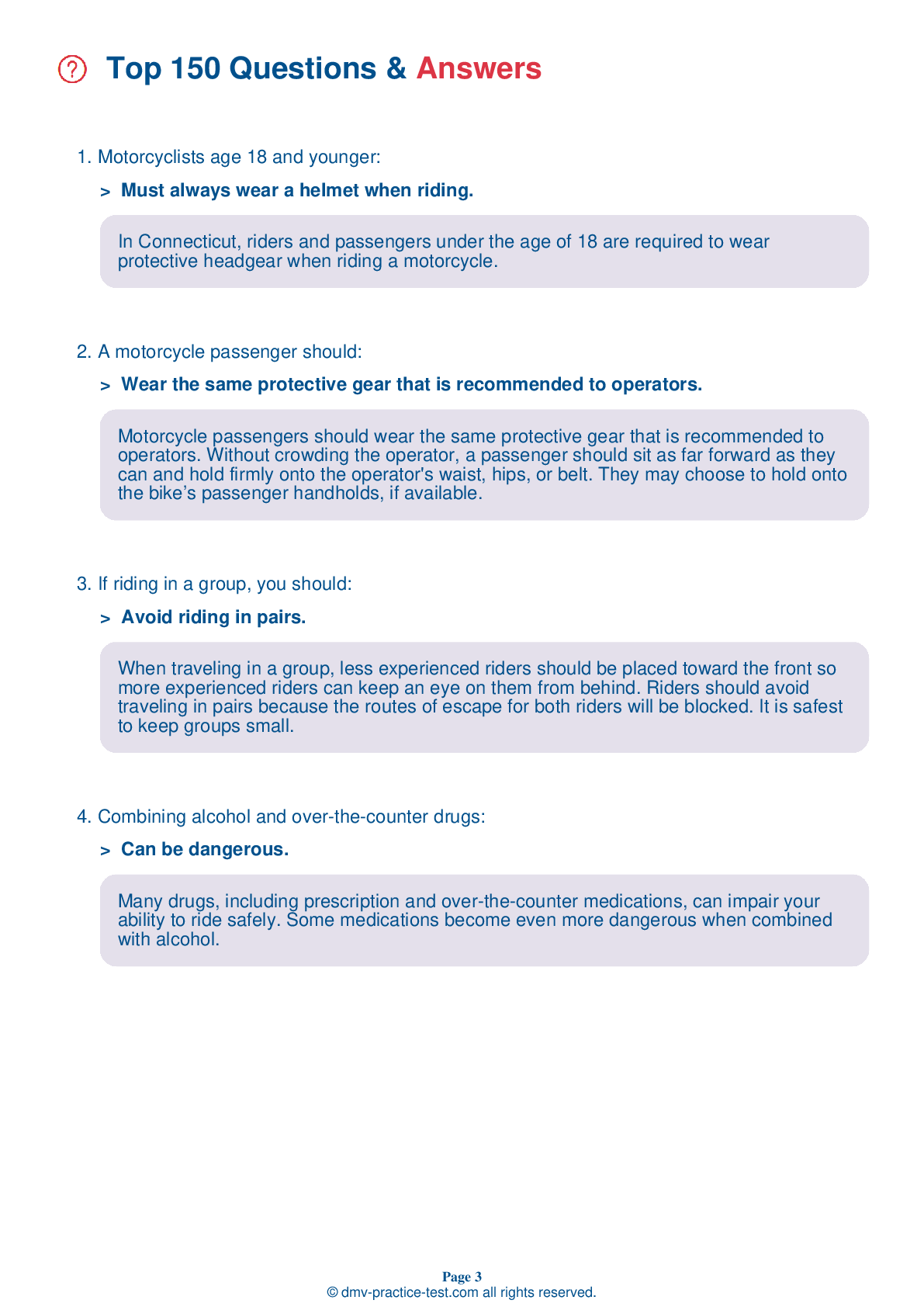Motorcycle Test | License CT 2025 | FREE Online Practice! #11 Page 3 of 3
Take this FREE motorcycle test (license in CT 2025) to check your knowledge of the road rules. To improve your results, download a motorcycle handbook online, study theory, and practice for free on our website. Still worried about how to get a motorcycle license in Connecticut in 2025? Check our website for more sample tests, train as much as possible, and boost your grades!
11 . When slowing down or stopping, you must:
Shift down through the gears as you slow down or stop. Stay in first gear while you are stopped to ensure that you can move quickly if you need to.
12 . If your front tire goes flat while you are riding:
If the front tire of a motorcycle fails, it will cause the steering to feel heavy. If your steering feels heavy, immediately exit the road and inspect your tires.
13 . If riding over rain grooves or bridge gratings, you should:
A motorcycle may weave when traveling over rain grooves or bridge gratings. This is generally not dangerous, so a rider should simply maintain a steady speed and continue straight across the surface. Trying to compensate for the weave by traveling at an angle forces a rider to move in a zigzag motion to stay in their lane, which is unsafe.
14 . Most motorcycle crashes occur:
Most motorcyclists involved in crashes are traveling at speeds of 30 mph or less at the time of the crash. Most crashes occur on short trips of less than five miles in length.
15 . When entering a highway while riding in a group, riders should:
While it is generally best for groups to ride in a staggered formation, riders should shift into a single-file formation when going through a curve, making a turn, entering a highway, or exiting a highway.
16 . To help other drivers see you, you should wear:
Wearing brightly-colored clothing will help you to be seen by other road users. Wear clothes that increase your visibility both during the day and at night.
See the exact questions that will be on the 2025 Connecticut DMV exam.
99.2% of people who use the cheat sheet pass the FIRST TIME
Jeneen was tired of paying $5/gallon. She got herself a scooter that required the motorcycle license. She studyed the motorcycle test cheat sheet and passed her test the next day!
Christopher tells us how he knew nothing prior to obtaining the motorcycle study guide, and he only got one question wrong because he clicked on the wrong answer by mistake.



